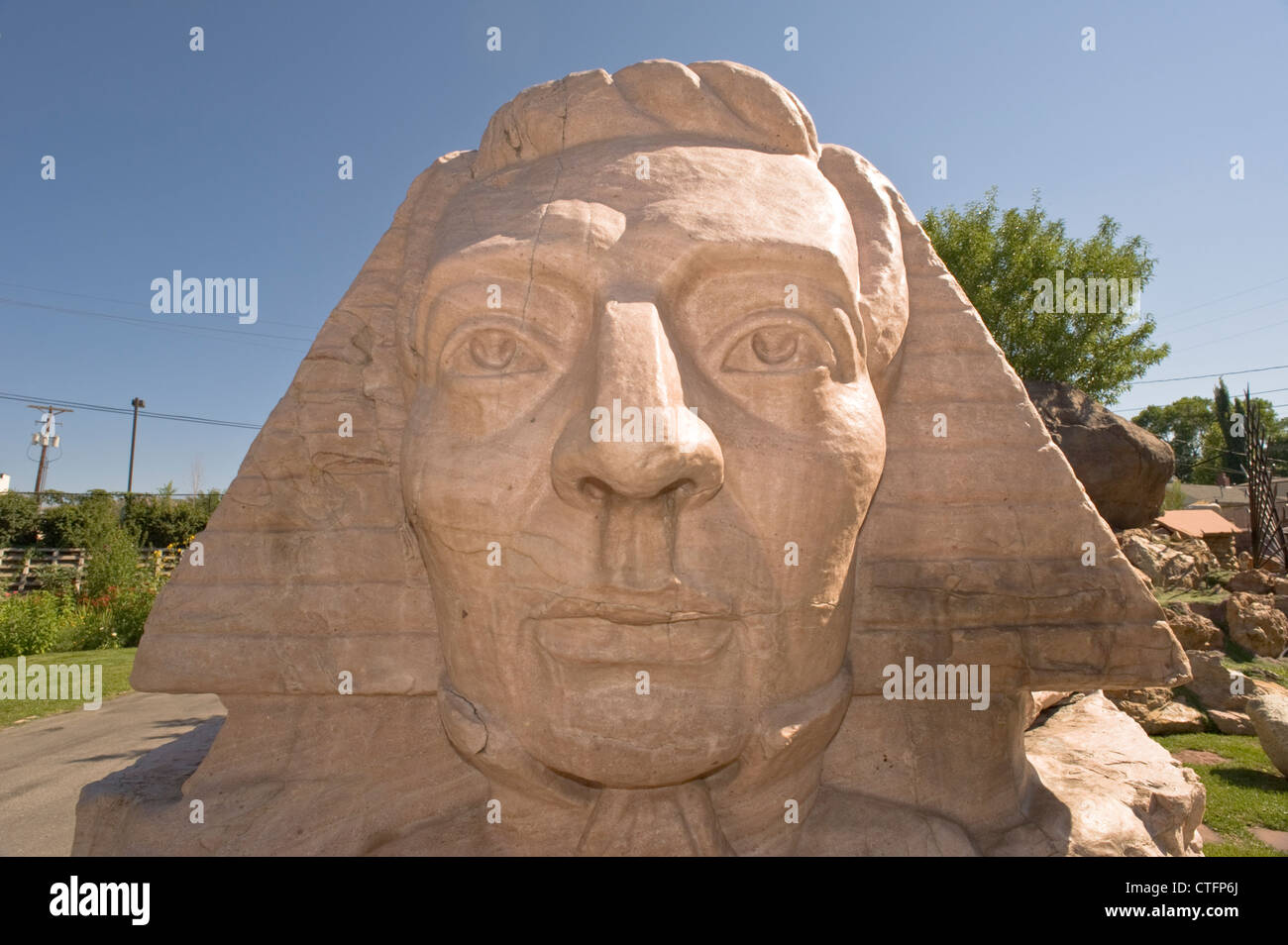Gilgal Garden, designated as a "visionary art environment", is filled with unusual symbolic statuary associated with Mormonism.

Image details
Contributor:
M L Pearson / Alamy Stock PhotoImage ID:
CTFP6JFile size:
32.8 MB (1.1 MB Compressed download)Releases:
Model - no | Property - noDo I need a release?Dimensions:
4151 x 2762 px | 35.1 x 23.4 cm | 13.8 x 9.2 inches | 300dpiLocation:
Gilgal Garden, Salt Lake City, Utah, United States, America, USAMore information:
The Gilgal Sculpture Garden is a small public city park, located at 749 East 500 South in Salt Lake City, Utah, United States. The park, which is filled with unusual symbolic statuary associated with Mormonism, notably to the Sphinx with Joseph Smith's head, was a labor of love designed and created by LDS businessman Thomas Battersby Child, Jr. (1888-1963) in his spare time. The park contains 12 original sculptures and over 70 stones engraved with scriptures, poems and literary texts. Gilgal Sculpture Garden is the only designated "visionary art environment" in the state of Utah. Thomas Child, a masonry contractor and Bishop of the 10th Salt Lake LDS ward, conceived of a symbolic sculpture garden that would be a retreat from the world and a tribute to his most cherished religious and personal beliefs. He began building the garden in the back yard of his family home in 1947, when he was 57 years old, and continued to pour his time and money into the work until his death in 1963. Child named the garden Gilgal after the Biblical location where Joshua ordered the Israelites to place twelve stones as a memorial. The name "Gilgal" is sometimes translated to mean "circle of standing stones, " an appropriate appellation for a sculpture garden. Gilgal is also the name of a city and a valley in The Book of Mormon, a sacred scripture in Mormonism.